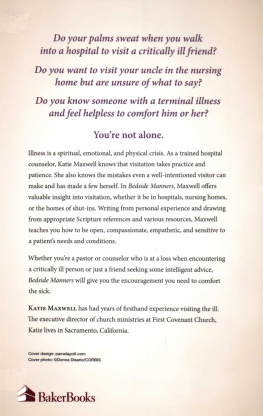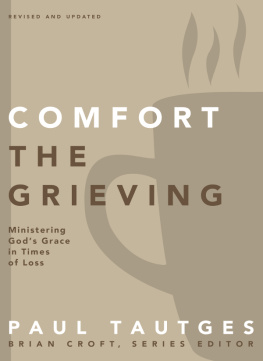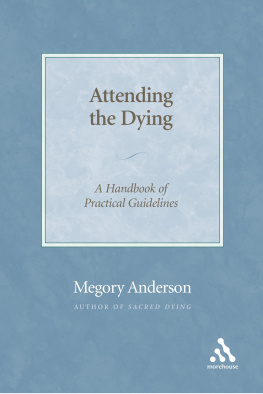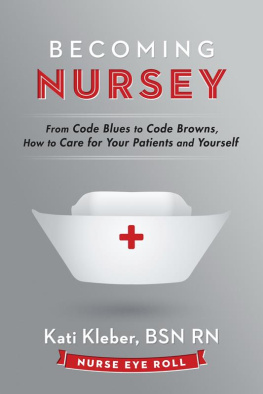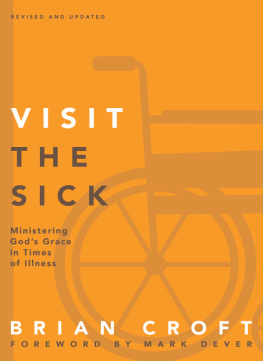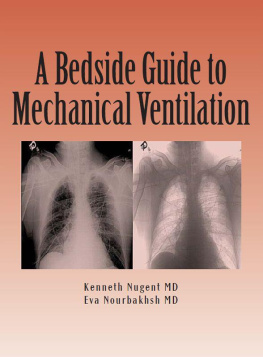
1990 by Baker Publishing Group
Published by Baker Books
a division of Baker Publishing Group
P.O. Box 6287, Grand Rapids, MI 49516-6287
www.bakerbooks.com
Ebook edition created 2012
All rights reserved. No part of this publication may be reproduced, stored in a retrieval system, or transmitted in any form or by any meansfor example, electronic, photocopy, recordingwithout the prior written permission of the publisher. The only exception is brief quotations in printed reviews.
ISBN 978-1-5855-8102-3
Library of Congress Cataloging-in-Publication Data is on file at the Library of Congress, Washington, DC.
Unless otherwise indicated, Scripture is taken from the Holy Bible, New International Version. NIV. Copyright 1973, 1978, 1984 by Biblica, Inc. Used by permission of Zondervan. All rights reserved worldwide. www.zondervan.com
Illustrations by Sandy Wenell Thornton
The internet addresses, office addresses, and phone numbers in this book are accurate at the time of publication. They are provided as a resource. Baker Publishing Group does not endorse them or vouch for their content or permanence.
To
Melba Basham Gibbons,
my mother,
whose example taught me compassion
for those who are ill.
Contents
Foreword
During the past decade, there has been a flood of pastoral aids for clergy and lay pastoral caregivers. Many suggestions have focused on authors theological statements about ministry, some have given formats for the implementation of lay pastoral care programs, and still others have presented practical aids to shape pastoral ministry as a day-to-day function of the congregation. Katie Maxwells book falls into the third category. Her work is filled with practical directions for offering pastoral care in a variety of settings: hospitals, the homes of shut-ins, and nursing homes. She addresses a concern which few have focused: the pastoral care of children. But she addresses also visits with dying patients, and care for the caregiver. Her book opens with be-attitudes of visiting, and closes with reflections on the churchs role in pastoral visitation.
Lest the reader too quickly pass over Bedside Manners as merely just another how to book, let me be quick to commend it for further study. It is a book about the practice of pastoral ministry. The author displays a vivid grasp of the anguish of hospitalization and the basic pastoral responses to patients anxieties. The reader is reminded of simple but basic characteristics of pastoral visitation: people need to know that there are people who care for them; visitation requires practice and patience; a visit is a time for compassionate caring, rather than an opportunity to teach some theological awareness, or even fulfil a missionary role.
The be-attitudes section offers a novel framework for introduction of practical steps to remember during visits: being prepared, learning how to be present, open, sensitive, and, importantly, still, that is, learning to listen. Readers are reminded that they are to be there for the other person, rather than to meet their own needs. Introduction to visits to members in hospitals is accompanied by lists of dos and dontsthe practical lessons that all pastoral visitors so easily take for granted. This section will be of particular value to beginning visitors. It concludes with a reminder that patients tend to be forgotten on discharge from the hospital, though they in fact still need support and ministry. The following sections, visiting shut-ins and nursing-home residents, are modeled after the early chapters, and are similarly replete with practical suggestions for the shaping of ministry.
The chapter on pastoral care of children will be of particular relevance to both clergy and lay caregivers. As I speak to clergy groups across the United States, I have become painfully aware that few clergy feel competent to minister to children. They confess that they lack training and often their sense of awkwardness inhibits them from initiating pastoral conversations. This means that children are forgotten, usually overlooked, by pastoral caregivers. The chapter identifies in a simple, straightforward manner the differences in developmental stages and pastoral measures appropriate to each stage. The strength of the section lies, once again, in a practical guide laced with more dos and donts. We are reminded that adults have much to learn from children, if only we will let them be our teachers.
The chapter on ministry with people who are dying begins, appropriately, with a sketch of the so-called stages of grief, as a basis for understanding the needs of terminally ill people. I find it more helpful to avoid the term stages , and turn to identifying the tasks of mourning, and clarifying the hard work which the dying and their loved ones must undertake as the separation occasioned by death becomes imminent. The authors delineation of grief ministry is apt, and extends to simple, moving suggestions if the visitor is with the patient at the point of death.
Caregivers fall into two categories: the primary caregiver, that is, the family member responsible for day-to-day care, and the occasional caregiver, that pastoral caller who represents the congregations ministry. The needs of the former are addressed in the short section Helping the Primary Caregiver. The latter issue is discussed in the longer final chapter, where she sets lay pastoral ministry, training of lay caregivers, and the supportive role of oversight, or supervision, within the congregations life as one of its fundamental functions. Pastoral caregivers are members called by the congregation to support the membership through supportive care and mutual ministry.
Bedside Manners is a practical guide to congregational pastoral care. It is a simple guide from which the beginning caregiver will benefit, but one which experienced caregivers can study to advantage. But it is more. It is a devotional book, for the reader is invited to pause and meditate on the place of prayer in both the life of the person visited, as well as in the life of the minister. It is a book to be pondered over, a book to be kept on the bedside table, or on the bookstand by your favorite chair, so that it can be picked up and read, a page or two at a time, until its lessons are part of the way you think about ministry.
Ronald H. Sunderland
Preface
One of the most rewarding ministries in which I have ever been involved began at American River Hospital in Carmichael, California. Under the supervision of Chaplain Christine Powell-Millar, I became a pastoral visitor.
Simply put, I visit people who are hospitalized. It didnt take long before I realized the important role visitors play in the life of a patient, and the way this opportunity has been a gift to me.
Unfortunately many people dont feel at ease around those who are ill. Because of this they tend to cut themselves off from sick persons at a critical time, when their support and friendship are needed most.
Bedside Manners is a book filled with practical information to help you through the visiting process. It will offer you the confidence you need to go beyond your comfort zone and help those who need your presence.
The information, ideas, and hints come from chaplains, nurses, lay visitors, and especially from the patients themselves. All have contributed ideas to make your visiting more helpful.
To be confident in the visiting ministry you must begin with prayer, feed on information, and then act on faith. Bedside Manners will supply you with the knowledge you need to be successful in this exciting and fulfilling work.
To the many people who watched and nurtured the growing of this book, I give my heartfelt thanks. To the nurses and patients who readily gave me input, I thank you for your time and honesty. A special thanks to Chaplains Ron Mulles, Patrick Thornton, Lowell Graves, Timothy Little, and Christine Powell-Millar, whose encouragement and knowledge made the project a reality. Peggy Gulshen deserves a special thanks for sharing her vast knowledge on working with children. I am also grateful to Pastor Steve Smith and to my dear friend Jerry Mountjoy for their editing skills. Thanks to Pastors Ken Working and Cliff Graves for their contributions.
Next page
